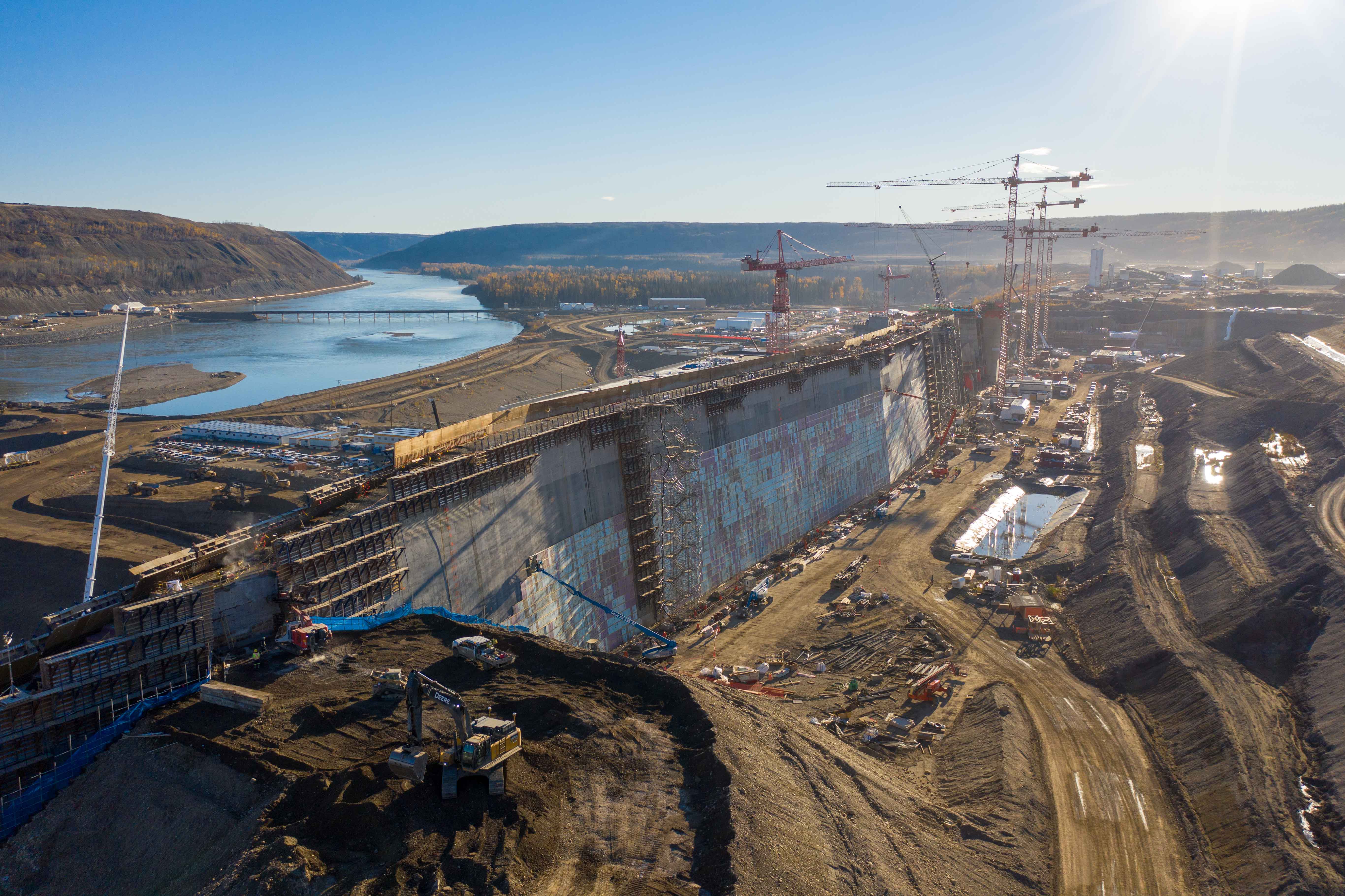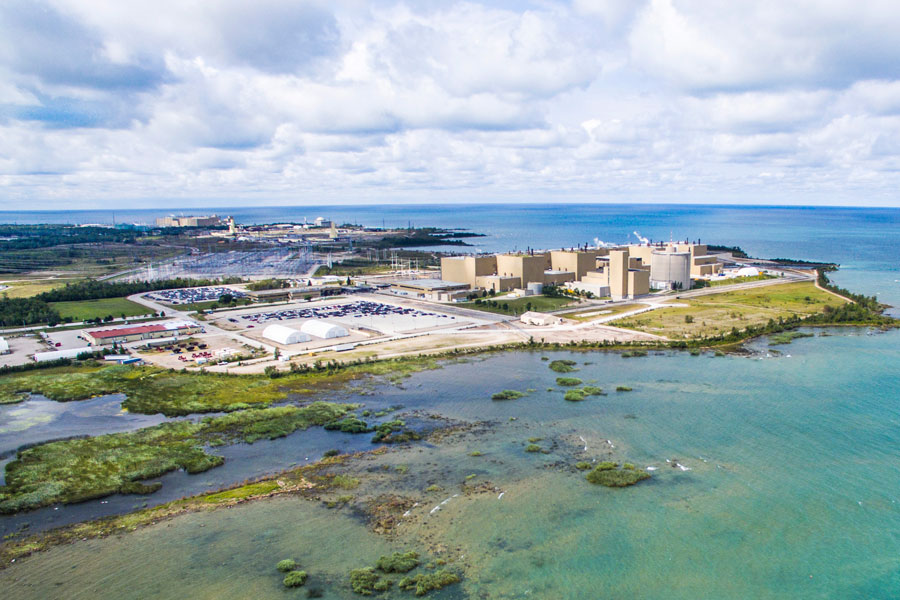Monday, June 30, 2025
The 100 largest public sector infrastructure projects under development have reached $273 billion, according to ReNew Canada’s latest Top100 Projects report. Infrastructure development moved ahead at a steady pace, despite pandemic challenges, and many of the projects highlighted include innovative environmental and climate resilient measures.
“Even in the wake of the ongoing COVID-19 pandemic, public sector infrastructure made significant progress in Canada in 2021,” said John Tenpenny, editor of the annual Top100 Projects report. “While work was slowed on some of these projects due to the pandemic, substantial strides were taken in both the procurement and construction of some of Canada’s largest infrastructure projects.”
The annual Top100 Projects report features the 100 largest public sector infrastructure projects currently under development in the country. Projects are ranked based on their confirmed project cost (capital or total contracts), and must be in active procurement, assessment, design and/or construction. The report incorporates input from project owners, governments, and project delivery teams, including engineers, architects, environmental consultants, and more.
The value of the Top100 Projects rose from $253 billion in 2021 to $273 billion in 2022. The top three projects on the list saw changes from last year with B.C. Hydro’s Site C Clean Energy Project grabbing the number one spot, followed by GO Expansion – On-Corridor Projects, and Bruce Power Refurbishment. The top three projects point to cleaner and greener Canadian public infrastructure initiatives.
In total, there are 13 new projects featured in the 2021 report, with the $10-billion Iona Island Wastewater Treatment Plant (#8) being the largest new project added.
Many of the projects featured take into account environmental, clean energy, and environmental, social and governance (ESG) factors. According to Tenpenny, investment in public infrastructure, particularly investments that make it resilient to the effects of climate change, will be crucial as Canada heads toward a zero emission future.
Let’s take a look at the environmental aspects of the top three infrastructure projects featured.
Clean energy

Site C’s roller-compacted concrete ramps are removed from the dam core buttress, and insulation is installed on the upstream side of the buttress. Credit: Government of B.C.
The Site C Clean Energy Project in Fort St. John, British Columbia is a hydroelectric earthfill dam on the Peace River that includes several components: an earthfill dam 1,050 metres long and 60 metres high, a 1,100-MW generating station and associated structures, an 83-kilometre-long reservoir, realignment of six sections of Highway 29, and two 77-kilometre transmission lines along an existing transmission line right-of-way, connecting Site C to the existing provincial power grid.
On February 26, 2021, the B.C. government announced a revised cost estimate of $16 billion and an expected one-year delay in the project’s in-service date (now 2025). The updated budget was approved by the provincial Treasury Board in June. Because of delays and impacts related to the pandemic, COVID-19 is the single largest contributor to the cost increase.
Site C will provide 1,100 megawatts of capacity, and produce about 5,100 gigawatt hours of electricity each year — enough energy to power the equivalent of about 450,000 homes per year in B.C. It will be a source of clean and renewable electricity for more than 100 years.
“Our government has taken this situation very seriously, and with the advice of independent experts guiding us, I am confident in the path forward for Site C,” said Bruce Ralston, B.C.’s Minister of Energy, Mines and Low Carbon Innovation. “B.C. needs more renewable energy to electrify our economy, transition away from fossil fuels and meet our climate targets. Site C will help our province achieve these things and is currently employing about 4,500 people in good-paying jobs.”
Public transportation

The changing landscape of transit routes along Laird Drive in Toronto, Ontario. Credit: Metrolinx.
The $15.7 billion GO Expansion On-Corridor Works consists of the core infrastructure and services that will allow Metrolinx’s rail corridor to run two-day, all-day service at a frequency of every 15 minutes, throughout the Greater Toronto and Hamilton Area (GTHA) network in Ontario.
The scope of the work, as defined by Metrolinx and Infrastructure Ontario through the procurement process, including: operation of train services including train driving; timetable planning, train control and dispatch for all operators across the GO-owned rail network; design, build, integration, maintenance, rehabilitation or renewal of the railway corridor (civil infrastructure, tracks, systems, signaling, rolling stock, etc.); and, reconstruction of Union Station track and platforms.
“Our region is growing, but public transit growth has not kept up,” said Metrolinx CEO Phil Verster, “A truly connected transit network will ensure that our people and communities are connected.”
Environmental benefits of this project include cleaner air and energy conservation throughout several Ontario communities. GO Expansion will reduce criteria air contaminants that impact human health and up to 13.5 megatonnes of greenhouse gases that contribute to climate change. After the project is delivered, nearly 145,000 cars trips per day will shift to rail and with more efficient trains, rail greenhouse gas emissions will drop from 1.85 kg CO2e/trip to 0.5 kg CO2e/trip. GO Rail will provide more service with up to 70 per cent less pollution per passenger trip.
Energy and ESG

The vast Bruce Power plant in Bruce County, Ontario provides approximately 30 per cent of the province’s current energy. Credit: Bruce Power.
The $13 billion Bruce Power refurbishment includes plans to refurbish six of Bruce Power’s eight nuclear reactors. The project, originally scheduled to commence in 2016, was postponed until 2020 based on the usable life of the reactors. The eight reactors produce 6,300 MW of power annually, approximately 30 per cent of Ontario’s current energy usage. The Bruce Power refurbishment project will make up to 23,000 jobs possible and generate about $6.3 billion in annual economic benefits in communities throughout the province. The new agreement between the Ontario government and Bruce Power has reportedly achieved $1.7 billion in savings for electricity customers.
Bruce Power has played a pivotal role in one of the largest clean energy initiatives in North America, as Ontario ended its use of coal-fired electricity in 2014. The refurbishment of four nuclear units brought 3,000 megawatts (MW) of reliable, low-cost, and carbon-free electricity back to the grid and provided 70 per cent of the electricity needed to take coal-fired generation out of the provincial supply mix.
In August 2021, the company received its second Environmental Social and Governance (ESG) Risk Rating by the third-party rating agency Sustainalytics. This ESG Risk Rating earns the company a spot in the Top 5 within its sub-industry on a global scale.
“Environmental and social principles have always been engrained in our organization, and we have established key metrics and targets to drive us toward excellence,” said Danielle LaCroix, Bruce Power’s director of environment and sustainability. “Open and transparent public disclosure of our performance and targets in these areas via our 2021 Sustainability Report and further integration of climate change risk into the business were some areas where we drove significant improvement of our rating.”
ReNew Canada is an affiliate publication to Environment Journal, part of the Actual Media Inc.’s team of leading publications covering the infrastructure, environment, and water industries in Canada.
For further information about the 2022 Top100 Projects report, including access to the complete report, visit https://top100projects.ca/browse-top100/











